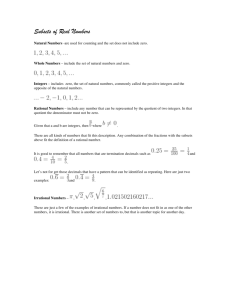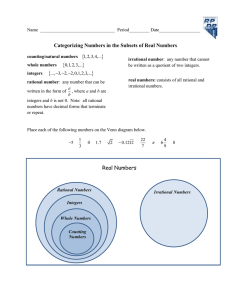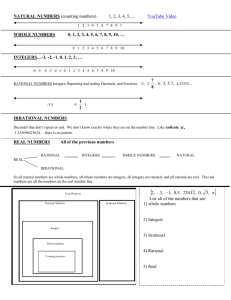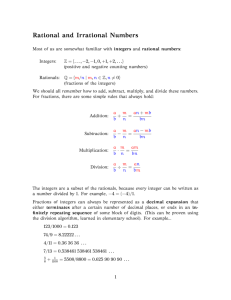1.3 Exploring Real Numbers
advertisement
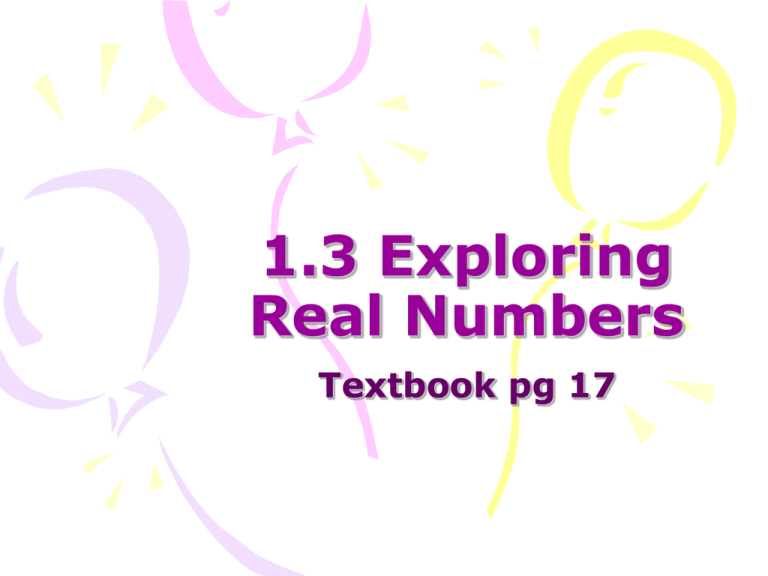
1.3 Exploring
Real Numbers
Textbook pg 17
Terminology
•
•
•
•
Natural Numbers: {1, 2, 3, 4, 5, 6,…}
Whole Numbers: {0, 1, 2, 3, 4, 5,…}
Integers: {…,-3, -2, -1, 0, 1, 2, 3, …}
A Rational Number is any number that
a
can be written in the form b where b≠0
and a and b are integers, or as a
terminating or repeating decimal.
• An Irrational Number is any number that
a
cannot be written in the form b where
b≠0 and a and b are integers, or as a
terminating or repeating decimal.
• Together, rational and irrational numbers
for the set of Real Numbers.
Real Numbers
Rational Numbers
Integers
Whole
Numbers
Irrational Numbers
Any example that proves a
statement false is a
Counterexample.
– All odd numbers end in 3
– Counter example: 25
To find the Opposite of a
number, change its sign.
• The opposite of positive is negative
– The opposite of 3 is -3
• The opposite of negative is positive
– The opposite of -10 is 10
Absolute Value
• A number’s absolute value is its
distance away from Zero on the
number line
• Absolute Value is ALWAYS positive
because you cannot have negative
distance
Find Each Absolute Value
1) 4 = 4
2 ) 21 = 21
3)
1
2
=½
4) -6 4 = 2
5 ) 12 4 = 48
An Inequality is a mathematical sentence
that compares the value of two expressions
using an inequality symbol such as:
•
•
‹
›
•≤
•≥
•≠
Less Than
Greater Than
Less Than OR Equal To
Greater Than OR Equal To
Not Equal To
Comparing Using
Inequalities
2
1)
3
2)
2
3
1
›
‹
=
3)
19
4)
3 . 11
6
1
6
- 19
‹
7 . 83
Assignment # 3
• Beginning on textbook page 20
• Problems 42-63 all, 68-72 all, 79-85
all, 87-95 odd
• Write all problems except for the
word problems. Show all of your
work.
• Do not pack up until instructed to do
so by the teacher.





